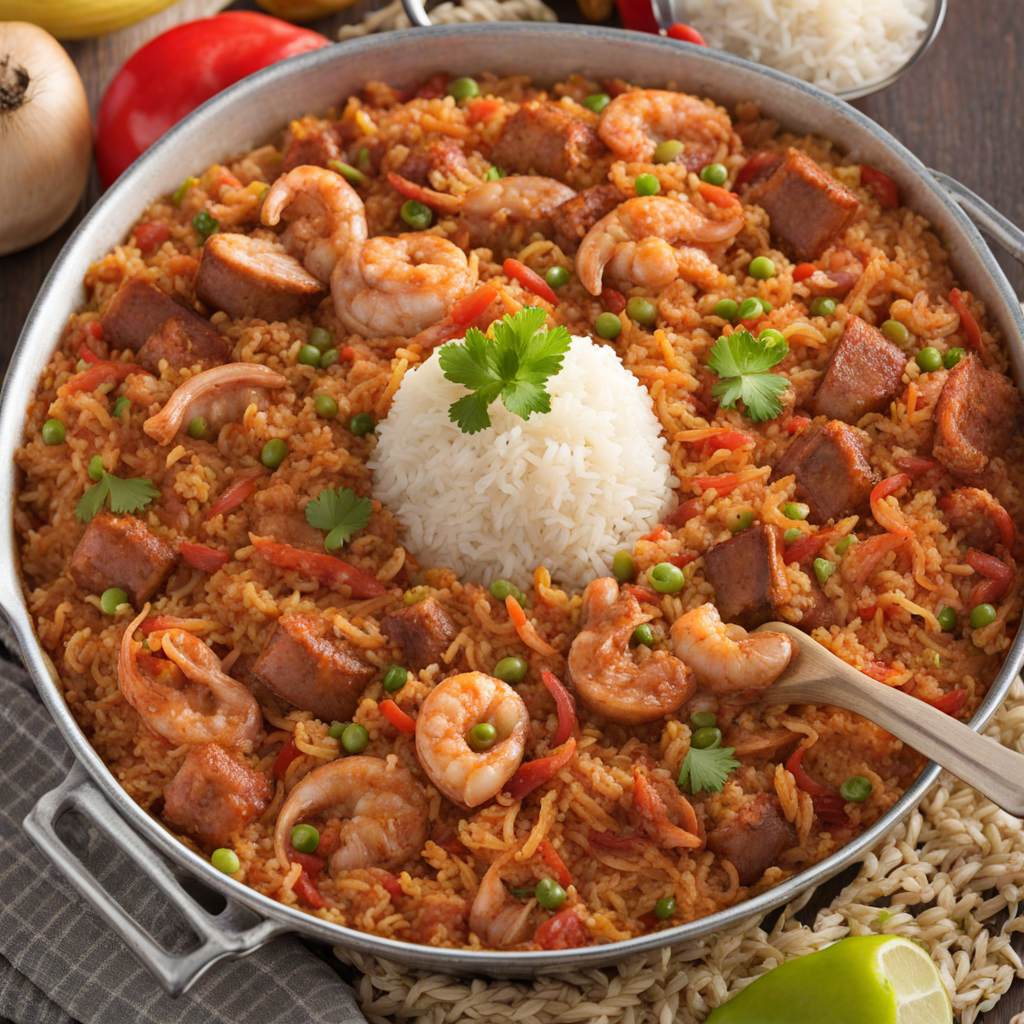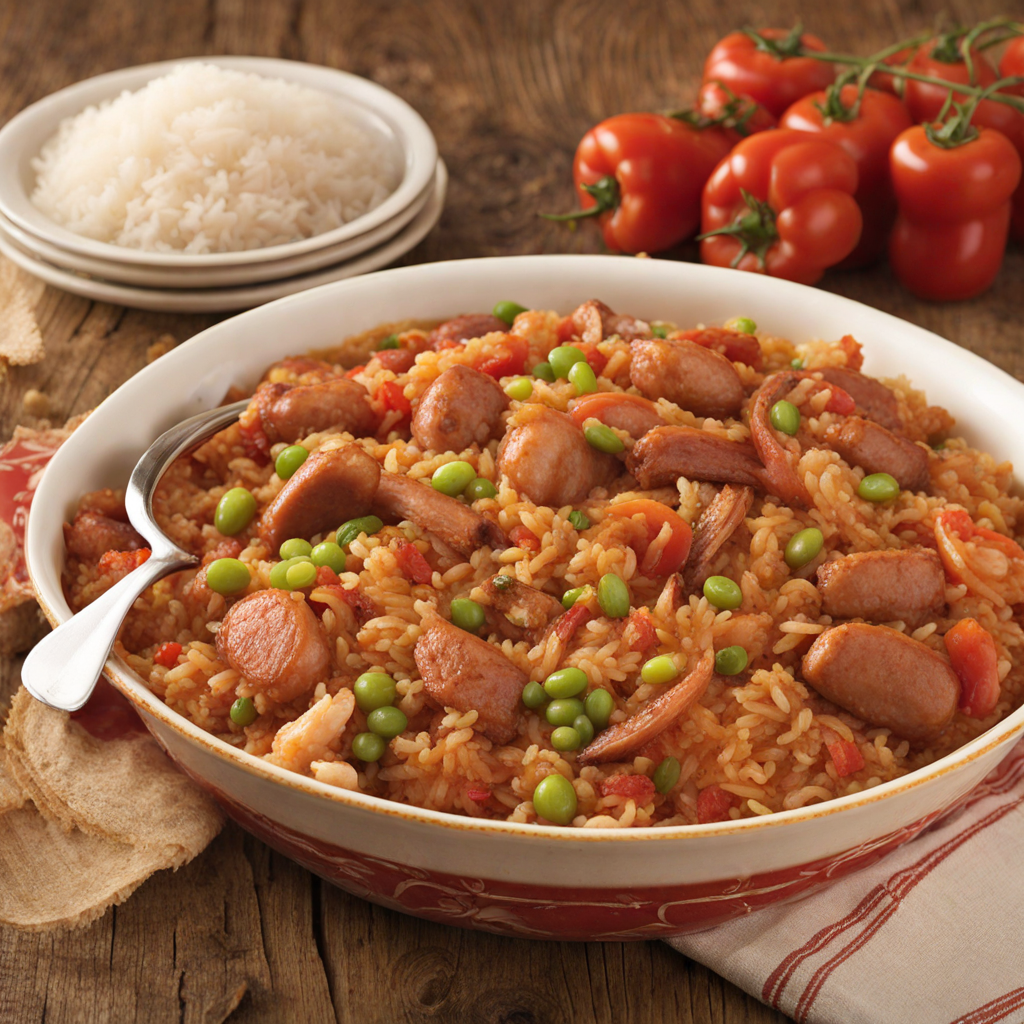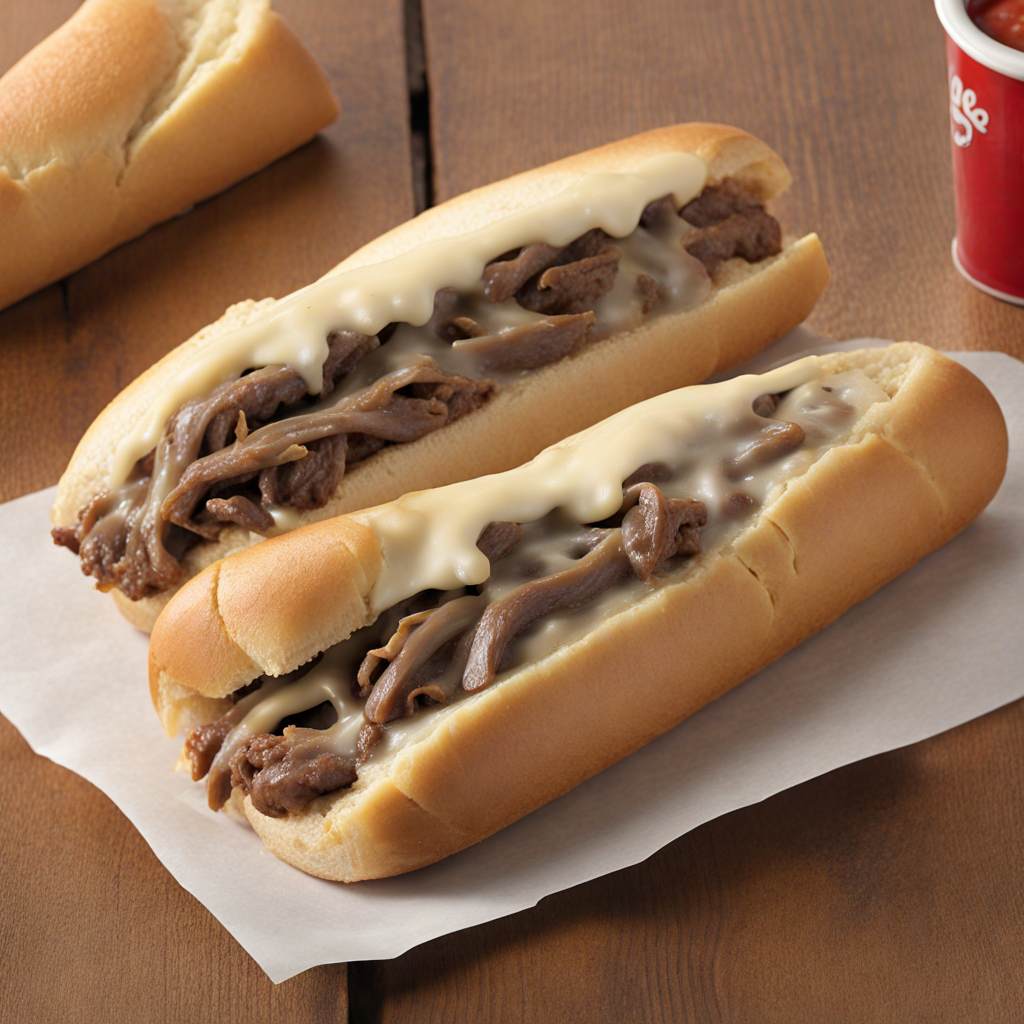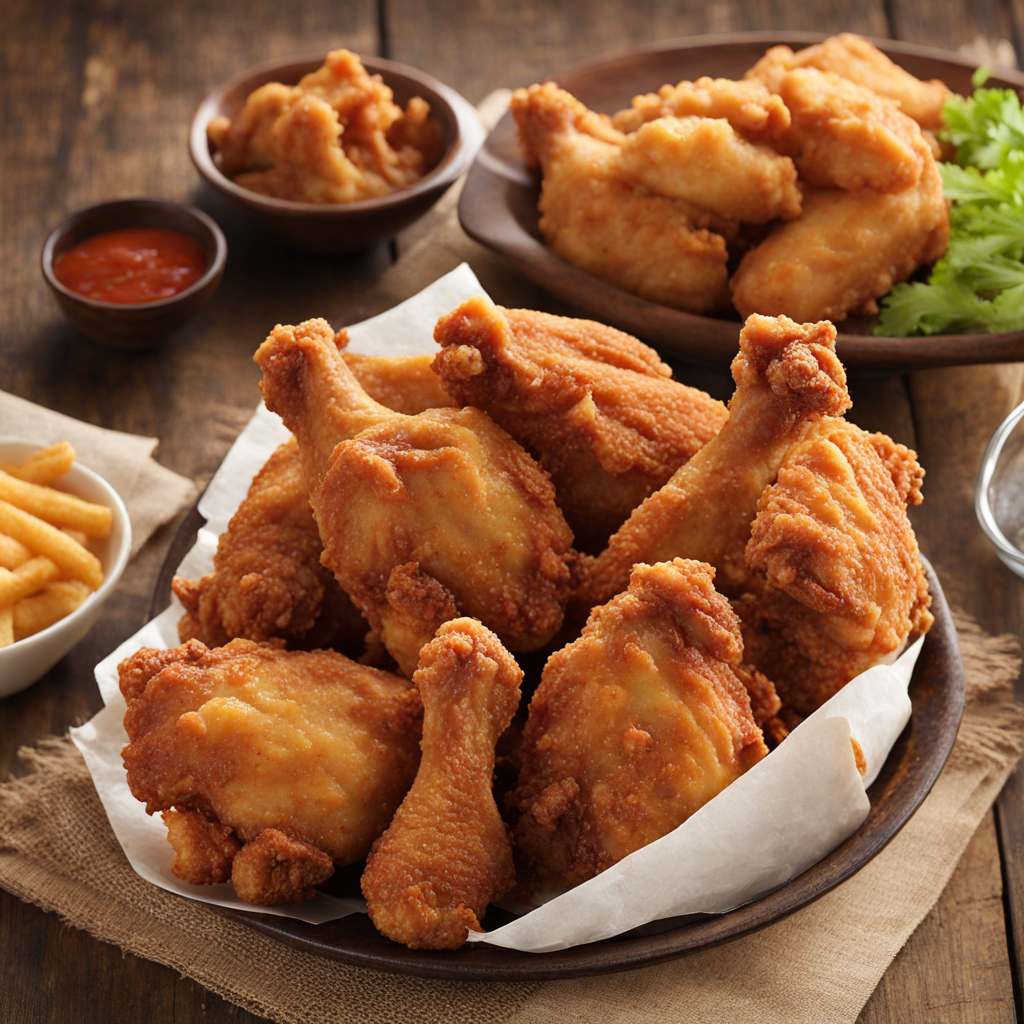Jambalaya
Jambalaya is a vibrant and hearty dish that hails from the rich culinary traditions of Louisiana, United States. This one-pot wonder combines the flavors of Spanish, French, and Creole cuisines, creating a unique taste experience that is both comforting and satisfying. The base of Jambalaya is typically made with long-grain rice, which absorbs the delicious flavors of the other ingredients, making each bite a burst of savory goodness. The dish is often seasoned with a medley of spices like paprika, cayenne pepper, and thyme, giving it a warm and inviting aroma that beckons you to dive in. At its core, Jambalaya features a harmonious blend of proteins, which can vary widely according to personal preference and regional variations. Common ingredients include succulent shrimp, juicy chicken, and andouille sausage, each contributing its distinct flavor and texture to the dish. The proteins are often sautéed with a mix of aromatic vegetables such as bell peppers, onions, and celery, known as the "holy trinity" in Cajun and Creole cooking, which adds depth and complexity to the overall taste. The result is a colorful and enticing dish that is as visually appealing as it is delicious. The beauty of Jambalaya lies not only in its flavor but also in its versatility. It can be made as mild or spicy as you like, making it accessible to a wide range of palates. Whether you choose to stick to traditional recipes or experiment with your own variations, Jambalaya is sure to impress. Served hot, often garnished with fresh parsley or green onions, it's perfect for gatherings, family dinners, or even a cozy night in. Each mouthful of Jambalaya tells a story of cultural fusion and culinary creativity, inviting you to savor the tastes of the American South.
How It Became This Dish
The Rich History of Jambalaya: A Culinary Mosaic of Louisiana Jambalaya is more than just a dish; it is a vibrant tapestry woven from the diverse cultural fabrics of Louisiana, particularly New Orleans. This flavorful one-pot dish, typically made with rice, meat, vegetables, and spices, has roots that trace back to various culinary traditions, making it a true reflection of the state's history and cultural evolution. #### Origins: A Melting Pot of Influences The origins of jambalaya can be traced back to Spanish, French, and African influences, intermingling in the fertile soil of Louisiana’s bayou regions. The dish is often compared to the Spanish paella, which features rice cooked with a variety of meats and seafood. Spanish settlers brought rice and saffron to the region in the 18th century, which laid the groundwork for what would evolve into jambalaya. However, the French Acadians, who were exiled from Canada in the 18th century and settled in Louisiana, also played a crucial role in shaping this dish. They introduced the use of the "holy trinity" of Cajun cooking — onions, bell peppers, and celery — which became a staple base for many Creole and Cajun recipes, including jambalaya. The African influence cannot be overlooked either. Enslaved Africans brought their culinary traditions and knowledge of ingredient use, which blended with the local food culture. The incorporation of spices and cooking techniques contributed to the distinctive flavor profile that jambalaya is known for today. #### Cultural Significance: A Symbol of Community Jambalaya is not merely a dish; it represents community and celebration in Louisiana culture. Traditionally, it has been prepared for large gatherings, festivals, and family reunions. The communal aspect of cooking jambalaya is significant, as it often involves multiple people working together to create a large pot of food, fostering a sense of togetherness and camaraderie. Festivals celebrating jambalaya, such as the Jambalaya Festival held annually in Gonzales, Louisiana, showcase the dish's importance to the community. These events often feature cooking competitions, live music, and cultural displays, bringing people together to honor their culinary heritage. The dish also plays a vital role in the local economy. Jambalaya is a staple at restaurants and food trucks throughout the state, and its popularity extends beyond Louisiana, making it a beloved dish across the United States. It represents the broader Southern cuisine, symbolizing hospitality and the spirit of sharing. #### Development Over Time: A Culinary Evolution As jambalaya evolved over the centuries, so too did its ingredients and preparation methods. The two primary styles of jambalaya emerged: Creole and Cajun. Creole Jambalaya often includes tomatoes, reflecting the influence of Spanish and Italian cooking. It is typically made with a variety of meats such as chicken, sausage, and seafood, and is characterized by its rich flavor and vibrant color. The tomatoes add acidity and sweetness, enhancing the overall taste of the dish. Cajun Jambalaya, on the other hand, usually omits tomatoes and relies more on the natural flavors of the meats and the "holy trinity" for its base. This version tends to have a deeper, smokier flavor, often incorporating smoked sausage or andouille, a spicy Cajun sausage that adds a unique kick. Cajun jambalaya is generally more rustic and reflects the agricultural roots of the Cajun people. The cooking technique has also evolved. Traditionally, jambalaya was prepared in a cast-iron pot over an open flame, allowing the flavors to meld beautifully. Today, it can be cooked in a variety of ways, from stovetop to oven, and even in pressure cookers or rice cookers. This adaptability has helped it remain a popular choice for home cooks and chefs alike. #### Jambalaya in the Contemporary Culinary Scene In recent years, jambalaya has gained prominence in the national culinary scene, celebrated in cookbooks, cooking shows, and food blogs. Chefs have begun to experiment with the traditional recipe, incorporating modern twists and gourmet ingredients, while still honoring the foundational elements of the dish. For instance, some chefs might introduce exotic seafood options, such as lobster or shrimp, or even vegetarian versions that maintain the essence of jambalaya without meat. These adaptations not only keep the dish relevant but also showcase the versatility and creativity inherent in Southern cooking. Moreover, the rise of food tourism in Louisiana has brought more attention to jambalaya. Visitors flock to New Orleans and other regions of Louisiana to experience authentic Creole and Cajun cuisine, with jambalaya often at the forefront of their culinary explorations. Cooking classes and culinary tours frequently highlight this dish, allowing tourists to engage with the culture and history behind it. #### Conclusion: Jambalaya as a Cultural Legacy In essence, jambalaya is a dish that tells the story of Louisiana's rich cultural history. It encapsulates the blending of various culinary traditions, reflecting the state’s diverse population and heritage. From its humble beginnings as a practical meal for large gatherings to its status as a celebrated dish in restaurants and festivals, jambalaya has evolved yet retained its spirit of community and hospitality. As we savor a bowl of jambalaya, we partake in a culinary journey that spans centuries, embracing the flavors, traditions, and stories of the people who brought it to life. It is a dish that continues to adapt and thrive, standing as a testament to the resilience and creativity of Louisiana’s culinary landscape. Whether enjoyed at a family gathering or at a bustling festival, jambalaya remains an enduring symbol of the vibrant culture of the American South.
You may like
Discover local flavors from United States







